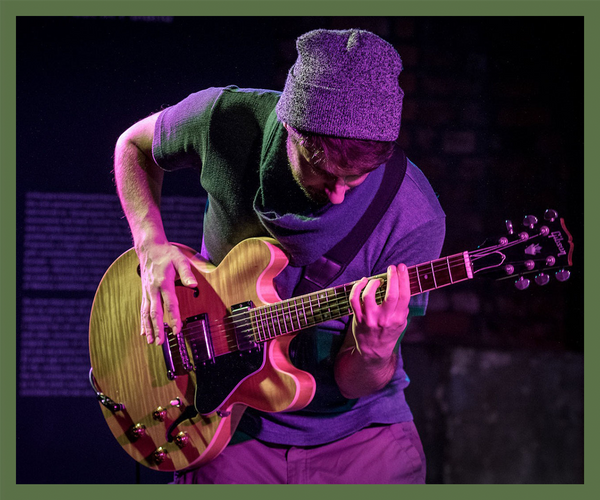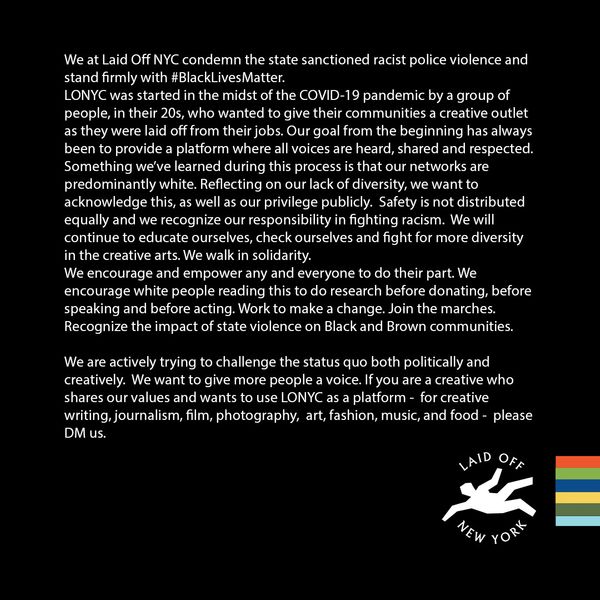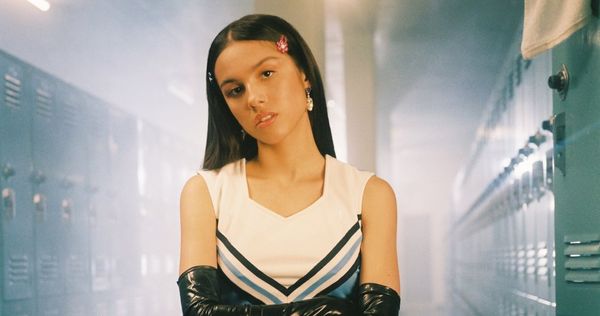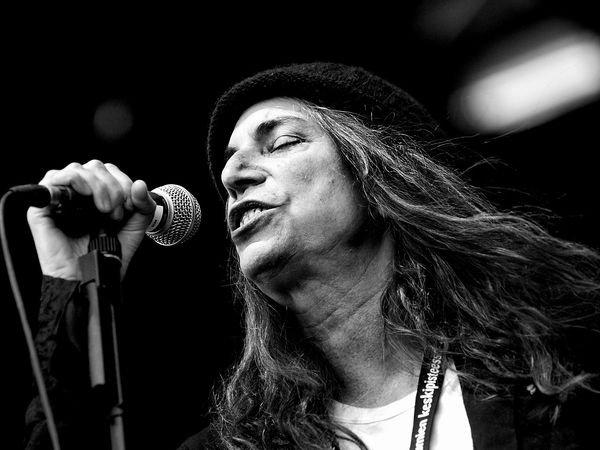by Raphael Helfand
MultiTraction Orchestra is a project born in quarantine. The brainchild of guitarist and composer Alex Roth, it germinated from a short guitar track he posted on Twitter, asking musicians to respond with their own variations on his theme. Many of the contributions he received were totally contrasting, but some lined up serendipitously when he dragged them into his master session. Running an outdated copy of Logic 9 on an old, barely functioning laptop, he tweaked and twisted dozens of submissions into a tight 10-minute saga.
The track begins with a squeal of high strings that bleeds into the low drone of a bowed double bass. An accordion swells under flurries of trombone. The extended opening recalls a classical orchestra tuning up for a concert, but with a much more intentional build. The powerful purr of a bass clarinet adds a sense of menace to the mix. Just over two minute in, a long cymbal roll crescendos into a sharp drum groove. A coptic lute adds microtonality into the fray, and a jazzier, picked double bass meshes perfectly with the drums to push the track forward. After a long lull of simmering horn/string dissonance, a gorgeous vocal melody, with sparse piano and sax accompaniment, brings us out.
The song feels effortless, a true production feat considering all the moving parts that went into it. I spoke to Roth about his background, his process, and the state of music in the time of COVID. Though the lockdown has rendered the interactive improvisation he thrives on impossible and stopped most of his projects in their tracks, it’s also presented him an opportunity to create in ways he’d never imagined.
Musicians!
— Alex Roth (@AlexRothMusic) March 21, 2020
While we're all in lockdown, what do you say we create a remote orchestra of experimental composers/producers/improvisers and make a track together? I have an idea of how it would work; just gauging if there's enough interest out there. RT if you're up for it... pic.twitter.com/QJfr4vdMwz
RAPHAEL HELFAND: Where are you right now?
ALEX ROTH: I’m at home in Krakow, Poland. I’m from London, but a couple years ago, I was just feeling tired out and craving somewhere a bit quieter. My wife is Polish, and my family history is Polish Jewish as well, so it felt like there was some kind of ancestral calling. Krakow is a perfect sized city. It’s big enough that it’s got a scene—well, not right now, obviously—but small enough that you can get around easily. Also, I feel like London’s lost its cultural edge over the last few years. It’s gotten quite expensive, and it’s becoming really hard to feel free there. Everybody’s working so hard, they lose sight of what their actual aims are. That’s how I felt anyway. It’s still an exciting place to be, and I go back a lot because it’s where I’m from and a lot of my projects are still based there. But I prefer this way around, being based somewhere else and being in London only when I need to be.
RH: Do you come from a musical family?
AR: Yeah. My mother is a music teacher, and I’ve got two brothers, older and younger, who are musicians as well. My mum taught us all piano, and then we picked our different instruments from there. My older brother started on clarinet and went to saxophone. And my younger brother always played drums. We have a trio.
RH: Is that Roth/Roth/Roth?
AR: Yeah, that’s the one, for lack of a better name. We don’t play together that often because we live in three different countries. My older brother lives in Dublin and my younger brother is still in London. But we try to do one show every year. Last time we played together was here in Krakow last year, at an alternative Jewish festival. It was a roaming performance across four sites in the old Jewish quarter. We each did a solo as a response to the sites that I scouted. Simon, the drummer, did a solo snare performance right up against the wall of the old Jewish ghetto. And then I led the audience from there to where I was playing, which was in the courtyard of this tenement building. And then we went to another courtyard, where Nick played a saxophone solo. We finished with a trio set in this theater which is a former Jewish bathhouse.
We improvise together because that’s what we grew up doing, even before we knew it was called improvising. We’d get together in the downstairs room where all the instruments were, and just play. So that’s my musical background, jamming for hours with my brothers in our front room. A lot of it comes from our mother. She runs this community big band that’s been going for 40 years. Just this week there was supposed to be a 40th anniversary gig that we were gonna go back together for, because we all played in it when we were kids, and some of the members of the band have basically seen us grow up. We used to hang out and hear the sounds of Duke Ellington and Count Basie. Once we’d been playing for a couple years, we started joining in.
RH: I can hear the jazz influence on your sound, but it’s also very ambient and textural. Who are some of your favorite artists in both those disciplines, and are there any you think have successfully combined the two?
AR: I got really into the New York downtown scene when I was 16, 17, people like Tim Berne, John Zorn. Most of Tim Berne’s bands were hugely formative influences on me. In terms of people dealing with composition and improv in a really heavy way, he was a real leading light for me. I actually got the chance to study with him a little. I went to a summer program at the School for Improv that Ralph Alessi runs in 2007, when I was just out of college. The faculty was all my favorite New York musicians, Steve Coleman, Vijay Iyer. Tim Berne was on the faculty for the first week with Marc Ducret and Tom Rainey. So that whole scene was a really big part of my listening, the way those guys compose with improvisation at the heart of it.
Of course, there’s a long tradition of that. Tim Berne is always talking about Julius Hemphill and the whole scene that predates his discography. Whenever I get into a particular scene or sound, I tend to be most interested in what’s happening right now, and then I’ll work my way back through recorded history, trying to find the DNA of the music.
With the electronic or ambient or textural thing… For me, it’s a broader church. There are so many different ways of coming at that tradition. It’s difficult to know where to start. Around the same age I was getting into that whole New York sound, I was also listening to a lot of UK electronic music. I used to listen to loads of stuff off Ninja Tune, Warp Records, people like Aphex Twin. You wouldn’t necessarily call it ambient, although obviously, there’s the Selected Ambient Works record. But there are textures in there that have a depth that a lot of other electronic music doesn’t have. There are so many layers. I had no idea how he was making those sounds. You hear stories—”He’s hooked up a toaster to his computer.” I was fascinated by how singular his musical universe was, and still is, really. There’s a lot of people trying to get that sound, but no one really does it like him. And again, once I got a taste, I started figuring out, what came before Aphex Twin? So then you’re into Brian Eno and his whole ambient thing. And then what came before that? You end up with some quite obscure stuff, like the Radiophonic Workshop, really niche historical scenes that have been dug up again more recently.
RH: Your guitar playing, especially with MultiTraction Orchestra, doesn’t necessarily sound like it came from a jazz background. It’s super minimalist and cinematic. I see you’ve done some scoring for film and TV. Does your process differ in those situations from purely musical projects?
AR: When I’m writing for any kind of media, whether it’s short films or dance or theater, I’m trying to leave space in the music for whatever else is happening in the listener’s imagination at the time. You’ve got to leave room for the narrative to unfold, even if it’s in the most abstract sense. If it’s music that’s designed to stand on its own terms, there’s a little more leeway to take up more space. But I’m naturally drawn to music that leaves space for the listener anyway. I like music that invites you in but still allows you to dream within it. I think that’s what I like about the minimalist thing, which ties in with the ambient scene as well—people like Steve Reich or Morton Feldman. I like the transcendental aspect of it, how you can easily lose track of time. You’re totally immersed in it, but you’re also somewhere else completely.
Bands like The Necks are exploring that space, combining improvised music and ambient music—slowly unfolding music might be more accurate. I’ve probably seen them live more than any other band. Every time it’s completely different, but it’s also completely the same. It’s always the same river, but it feels different every time you step into it. If you ever get a chance to see them, you need to be in a room with that music as it’s happening. It’s a magical thing.
RH: Let’s talk about MultiTraction Orchestra. Where did the idea come from initially?
AR: When the crisis hit, I was looking at all the work that had evaporated for the rest of the year and thinking, what am I gonna do with all this time? The week the lockdown started, I had a studio booked in the middle of the forest in southeast Poland, where I was gonna record the debut album of this trio I’ve been playing with here in Poland. It’s two guys from Warsaw, amazing musicians: a clarinetist called Waclaw Zimpel and a drummer named Hubert Zemler. It took me like a year to book the studio, and then the lockdown happened and it obviously got cancelled.
I was thinking, “I want to maintain the plans that I had, if possible, and adapt them. But I also want to use this chance to start new collaborations.” And I knew that everybody was in the same position. Every musician I know is sitting at home with no plans now because everything’s cancelled. I thought, “Actually, we could use this time to do something together.”
So I put a little call out on Twitter saying, “Any musicians out there wanna do something remotely?” And loads of people responded. That gave me the momentum to put something together. I wanted it to be really inclusive. Whoever wanted to be involved, I wanted them to be involved. In the end, it was 27 musicians.
Everyone who sent something is on the record. Some are more present or forward in the mix than others, but it’s all there. That was my ethos. If people are gonna spend time doing this totally DIY project—there’s no money involved—I want to accommodate everyone who’s taken the time to send something over. That created some quite interesting challenges, from an editing perspective. You’ve got this huge array of instruments and sounds, and you have to figure out what’s gonna work together. Nobody could hear what anyone else had recorded, so I was trying to create a sense of interaction and spontaneity out of something that could have potentially ended up quite clinical.
RH: On the track you made as a prompt for everyone, what were you going for? What was your approach to trying to get the best responses possible out of the musicians?
AR: It was kind of a juggling act. It needed to be clear enough to give people a sense of what the overall vibe was gonna be. But it also needed to be free enough that people could do whatever they wanted on it. In the end, it was like a two-and-a-half-minute, multi-tracked guitar thing that I processed quite heavily. It was a little ambient, but there was still a tempo to it, and there was a clear tonality. For me, those were important things because I didn’t want people sending stuff in that wouldn’t work together. That track was the glue. It set the tempo and let everybody know, “You don’t have to play in time, but if you do, it’s this BPM.” Fortunately, not everyone felt like they had to play in concordance with that. Some people deliberately tried to contrast, either temporally or texturally, with the guide track.
It worked out surprisingly well. I was worried it would be totally chaotic, and that there would be no way I could hang everything together, but I was surprised. When I was going through and trying to figure out which things were gonna work well together, there were these bizarre, happy accidents where I’d just drag an audio file in, and by some miracle a phrase would line up between two instruments where they’d play the same thing at the same time. There’s no way it could’ve happened if they’d been in the same room together. And yet, in the editing process, these moments jumped out. That was my role, to listen out for those moments where it feels like magic is happening, and to try to enhance that and make it the focus of the track.
RH: There are some unusual instruments on the track—the Hotteterre flute, the coptic lute—that I’d never heard of. Did that present some challenges, trying to get those unorthodox sounds to blend into the mix?
AR: The coptic lute was one where, when it came, I was like, “What am I gonna do with this?” Not only because of the sound of the instrument and the way it’s tuned—it’s microtonal, so it’s got a different tuning system to most of the other instruments—but also what Ian Summers played. The track he sent was just him repeating this scale pattern at different speeds. On its own it sounded dry. It was like, “Has he really grasped the concept of this piece?” But once I found a place for it in the track, it ended up having quite an important role. It’s this ascending pattern that builds into something. So any time there’s a big build, it’s part of that. I came to really like the sound of the instrument and the way the tuning jars with the rest of the track. It adds a character that I would never in a million years have dreamt up. If I was sat down at a blank screen thinking, “What instruments shall I write for today?” I’d never have thought, “I’m gonna get this guy in Exeter to send me a recording of his homemade, microtonal coptic lute.”
That was part of the joy of it for me, having materials to work with that took me out of my comfort zone. Over the last five years or so, I’ve been working on the production side of things—how to make my own sounds, record my own instruments, be as self-sufficient as possible. And this is the first big project where I’m dealing with other musicians’ recordings as the raw materials. It was a breath of fresh air to have all these sounds to play with.
RH: I was especially impressed by the percussion and the bass. They drove the piece forward in places where it could’ve lagged. I see there are two percussionists and three double bassists on the recording. How did you get them all to work together?
AR: This was another happy accident. Each of the double bassists sent something that had a really distinct character. The double bass near the beginning of the track is quite droney. It’s this bed that a lot of the other instruments sit on. And there’s another double bass bit that’s a rhythmic, pizzicato pattern. The last one is quite buried in the mix, but he was playing around with a lot of loop pedals and pitch-shifting. It doesn’t really sound like a double bass. If they’d all sent something that was really droney and bowed, I don’t know that I’d have been able to use them all. But because they happened to be so different, they all found their way into the track.
It was the same with the two drummers. The main drum groove that happens like a third of the way in, there’s more of a groove feel to that. And then my brother does a cymbal roll. I used that to create a bit of shape and a sense of momentum building. They hadn’t communicated with each other about it, but one of them decided to do one thing, and the other decided to do something totally contrasting. It just happily worked out like that.
RH: Do you think a lot more international collaborations like yours will start to come together because of COVID?
AR: I think so. Things have kind of been going that way anyway. And now that a lot of people have been getting to grips with the technology, there’s no reason why that shouldn’t continue. For me, it’s been really liberating. It’s a very productive time for me because of this way of working, inviting other people into a creative process that normally is quite solitary.
RH: What other artists do you think are doing innovative work during the lockdown?
AR: There’s an organization in Ireland called the Improvised Music Company that’s been doing this series called “Piece by Piece.” It’s one of my favorite things that I’ve seen come out of this. It’s a weekly video stream that gets put up every Friday. The idea is that each artist responds to the one who came before. So the first one who went up was this guitarist and electronic composer called Shane Latimer, who had this modular synth and guitar setup. And then the next week was actually my older brother and his wife responding to that one, and the next week someone responded to them. It’s this pass the parcel effect. And it’s still going on. There’ll be another few weeks of it. It’s really cool to see because it’s something that wouldn’t have happened if not for this particular situation. It’s great to see artists dealing with a particular concept in their own way. Everybody’s responding quite differently.
RH: I tried to write a profound final question, and it ended up being pretty cheesy, but here goes: How do you think this moment will affect the future of music?
AR: Big question. People are scrambling, trying to find ways to make music happen. A lot of friends of mine are trying to find out the best way of doing super low-latency remote recording sessions, figuring out if it’s possible to improvise together. I think we’re gonna see a very rapid rate of development on that side of things because, from what I can tell, it’s still not really possible for improvised music, or anything that’s interactive, to be done remotely. But wherever there’s a demand, somebody will step up and solve the problem.
RH: Do you think the latency problem can ever be fully solved?
AR: At a certain point, you just come up against the laws of physics. Anything that’s happening over a network connection, there’s latency. You can’t get rid of it. But there will be some kind of solution, I’m sure. To be honest, though, I’m not 100 percent sure I really want that to happen. I’m a bit wary of people trying to replace all musical activity with something online. What happens when the lockdown’s lifted, and we want people to come out of their houses and come out to venues, and everyone’s sitting at home like, “Oh, it’s cool. I’ll just stream it for free online, and it’s the same thing, because all the musicians have persuaded me that online is the new gig.” So I’m ambivalent. I’m more interested in people pre-recording things and tying them in with a strong visual aspect, or doing things that use recording technology in a way they wouldn’t be able to live, because that could only exist online. But somebody sat in their room with a webcam on, playing over the Internet… For me, as a concept, it’s less interesting.
That’s not to say there aren’t amazing musicians doing that. I loved seeing Bill Frissell, for example, do a live solo stream. When else do you get to see Bill Frissell sitting in his room at home playing “Lush Life?” There are opportunities now to hear musicians in ways that you wouldn’t otherwise hear them. But in general, I’m more drawn to things that exist because that’s the only format they can exist in, rather than just because they can’t happen live right now.
The other thing that’s happening is that people are reassessing the model of music consumption. In the UK, there’s a campaign to fix streaming, the Broken Record campaign, which is trying to lobby the big streaming platforms to reassess how they remunerate the artists who create the content they’re selling. I think that’s one thing that could come out of this. Certainly, people are gonna have a wider appreciation of how unsustainable the situation is. We’re due for a change.
MultiTraction Orchestra is working on two more tracks with a similar premise. They’ll release the three songs as an EP in late 2020 or early 2021. Follow Roth’s many projects @AlexRothMusic.
Get to know Raphael better: @raphaelhelfand
*Thumbnail Image : Alex Roth, by Ada & Sobiesław Pawlikowscy. Courtesy of the artist.



